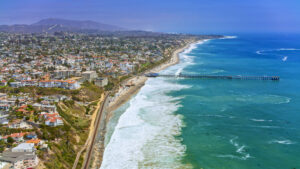The Island
A beautiful green island sits pristine in the middle of a vast ocean. Ten miles in diameter, it has abundant forests intermingled with lush meadows teeming with wildlife of every sort. Man discovers the island. Within a year twenty pioneer families have moved there to stay. They cut down a few trees to build their log homes, down a few more for firewood that clears space for fields and gardens, and hunt the native birds and animals for food. They send their relatives letters telling how wonderful it is to live in Paradise.
Relatives a hundred families strong arrive the next year. They too build cabins, clear fields and plant gardens, using native fauna and flora for supplemental food. Dispersed over the island, they clear a road straight across the middle for ease of quick transport and communication between the opposite coasts. They write to tell others of the good life.
A year later four hundred families arrive. Only the lucky ones find island timber with which to build, for it is disappearing fast—these late comers must import costly building materials. They also must import food, for there are no more deer, no more small animals—even the song birds and lizards have been eaten. The original settlers can no longer share from the gardens they depend on to feed themselves, and most have sold off their fields for building sites and profit. Too many people now reside on the island.
And still they come. Building sites are used up so there are no more lots for sale. Demand rockets up the price of existing houses. Self sufficiency has become rare, virtually all residents now depend on costly imports for their food and daily life needs. The island’s natural resources of every kind were long ago used up. There no longer are sufficient jobs to sustain the population. Many are unemployed but cannot afford the cost to leave.
Crime and drug addiction become rampant. Sewers are overburdened, sanitation declines, diseases increase, life expectancy goes down. Water sources are polluted throughout the island. Noxious runoff from dead streams entering the sea surrounds the island with toxic red algae. The very air carries a stench noticeable twenty miles downwind by those few who still approach from across the sea. Tourism is dead.
The island is grossly overpopulated, but babies continue to arrive, lots of new mouths demanding food, now. Human breeding continues as if nothing were wrong. On the now-impoverished hellhole of an island, it’s about the only fun they have anymore.
